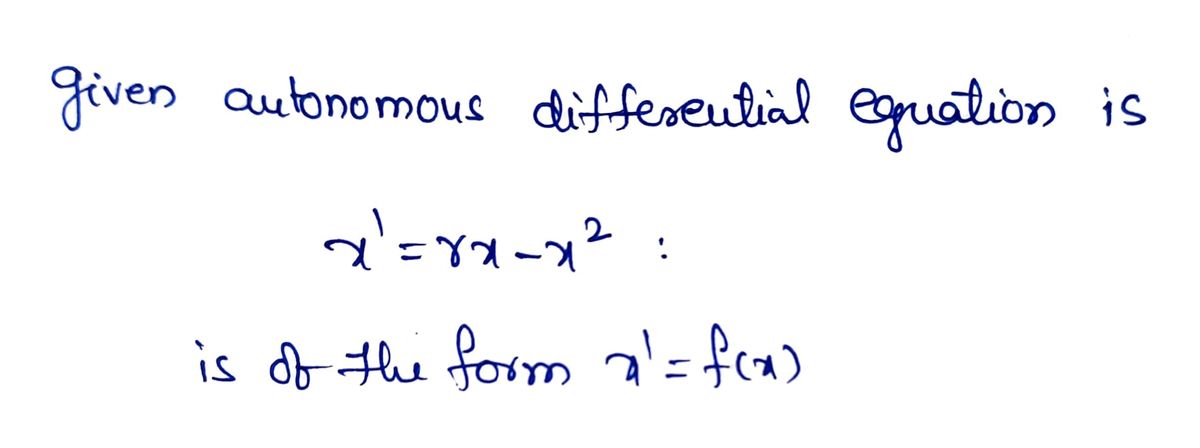he following differential equation contains a parameter, r, which is allowed to vary. x = rx-x² ind all equilibria of this equation in terms of r and determine their stability. Identify any bifurcation values. each: Construct a bifurcation diagram for the equation above, indicating the stability and (approximate) loca- on of all equilibria. Clearly label at least one point on your graph.
he following differential equation contains a parameter, r, which is allowed to vary. x = rx-x² ind all equilibria of this equation in terms of r and determine their stability. Identify any bifurcation values. each: Construct a bifurcation diagram for the equation above, indicating the stability and (approximate) loca- on of all equilibria. Clearly label at least one point on your graph.
Advanced Engineering Mathematics
10th Edition
ISBN:9780470458365
Author:Erwin Kreyszig
Publisher:Erwin Kreyszig
Chapter2: Second-order Linear Odes
Section: Chapter Questions
Problem 1RQ
Related questions
Question
Answer part 2 of the

Transcribed Image Text:The following differential equation contains a parameter, r, which is allowed to vary.
x' = rx-x²
Find all equilibria of this equation in terms of r and determine their stability. Identify any bifurcation values.
Reach: Construct a bifurcation diagram for the equation above, indicating the stability and (approximate) loca-
tion of all equilibria. Clearly label at least one point on your graph.
Expert Solution
Step 1

Step by step
Solved in 3 steps with 3 images

Recommended textbooks for you

Advanced Engineering Mathematics
Advanced Math
ISBN:
9780470458365
Author:
Erwin Kreyszig
Publisher:
Wiley, John & Sons, Incorporated

Numerical Methods for Engineers
Advanced Math
ISBN:
9780073397924
Author:
Steven C. Chapra Dr., Raymond P. Canale
Publisher:
McGraw-Hill Education

Introductory Mathematics for Engineering Applicat…
Advanced Math
ISBN:
9781118141809
Author:
Nathan Klingbeil
Publisher:
WILEY

Advanced Engineering Mathematics
Advanced Math
ISBN:
9780470458365
Author:
Erwin Kreyszig
Publisher:
Wiley, John & Sons, Incorporated

Numerical Methods for Engineers
Advanced Math
ISBN:
9780073397924
Author:
Steven C. Chapra Dr., Raymond P. Canale
Publisher:
McGraw-Hill Education

Introductory Mathematics for Engineering Applicat…
Advanced Math
ISBN:
9781118141809
Author:
Nathan Klingbeil
Publisher:
WILEY

Mathematics For Machine Technology
Advanced Math
ISBN:
9781337798310
Author:
Peterson, John.
Publisher:
Cengage Learning,

